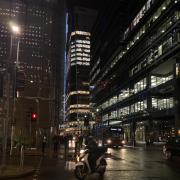
For many retail customers, fast fashion presents a solution to all of their vogue wants and needs, replicating the latest catwalk trends and bringing them to the shelves, in just a matter of hours. On top of that, it’s all for a low price. However, there are much larger, often overlooked prices we are paying for our clothes. So, what is the real cost of fast fashion?
Firstly, let’s address what fast fashion is. Fast fashion is a term used to describe a highly profitable business model, mass producing clothing based on catwalk trends. Brands like Zara, Fashion Nova, and even H&M have perfected the fast fashion business model, allowing the masses to access these clothes. Clearly, there are benefits to be seen, with financial accessibility, as well as the market’s ability to accommodate to the rapidly changing trends. Consumer’s also get a myriad of stores to shop from, catering to their needs and convenience. Additionally, fast fashion has even proven to increase global digitalisation, with e-commerce booming as an industry, even keeping the economy going during the pandemic. So clearly, it’s not all bad.
But the problems lie within the skeletons in the closet, the secrets to facilitating this high profit mass production, with so much consumer ease. These affordable articles of clothing often have short lifetimes, contributing to the ‘throwaway culture’ which we as a society have taken on, and thrive in. Buying into this cycle of planned obsolescence causes most consumers to purchase significantly more than needed, with the average person using an item of clothing for half as long compared to twenty years ago. This has both socially and environmentally detrimental effects, costing us and future generations.
Clothes which have to have a quick turnaround on a mass scale are known to be produced in ‘sweatshops’, factories in which workers are given barely liveable wages, typically in East and Southern Asia. Socially, this exploitation of workers hinders development, as these sweatshops leave them with no option but to work for them. Environmentally, textile production contributed to more greenhouse gases than flights and maritime travel combined in 2015, which wouldn’t be the case without our rapid incline towards ‘throwaway culture’.
This ‘throwaway culture’ also causes huge amounts of textile waste. Not just with consumers throwing away clothes, but even firms, as they mass produce and mass waste too, as trends rapidly change and are no longer demanded. A hundred billion garments each year go to landfills, and are often deposited in low income areas. If not dumped, firms such as Burberry which attempt to adapt to fast fashion, end up instead burning over £30 million of stock in 2018, also having extremely damaging environmental effects.
All that said, it is extremely difficult to break this cycle and buy clothes out of the fast fashion, however with small, individual contributions, the culture in our society can be changed. Whether this being through repurposing clothes, thrifting or even just shopping sustainably, the environmental effects of the fast fashion industry can be controlled. With firms increasingly embracing transparency, whilst staying on market trends, consumer demands can be forecasted in advance, to prevent over mass production and waste. Desired goods can be produced in a sustainable fashion, and the environmental and social costs of fast fashion can tend to zero.





























